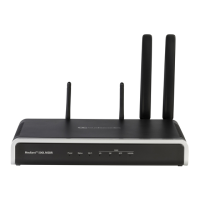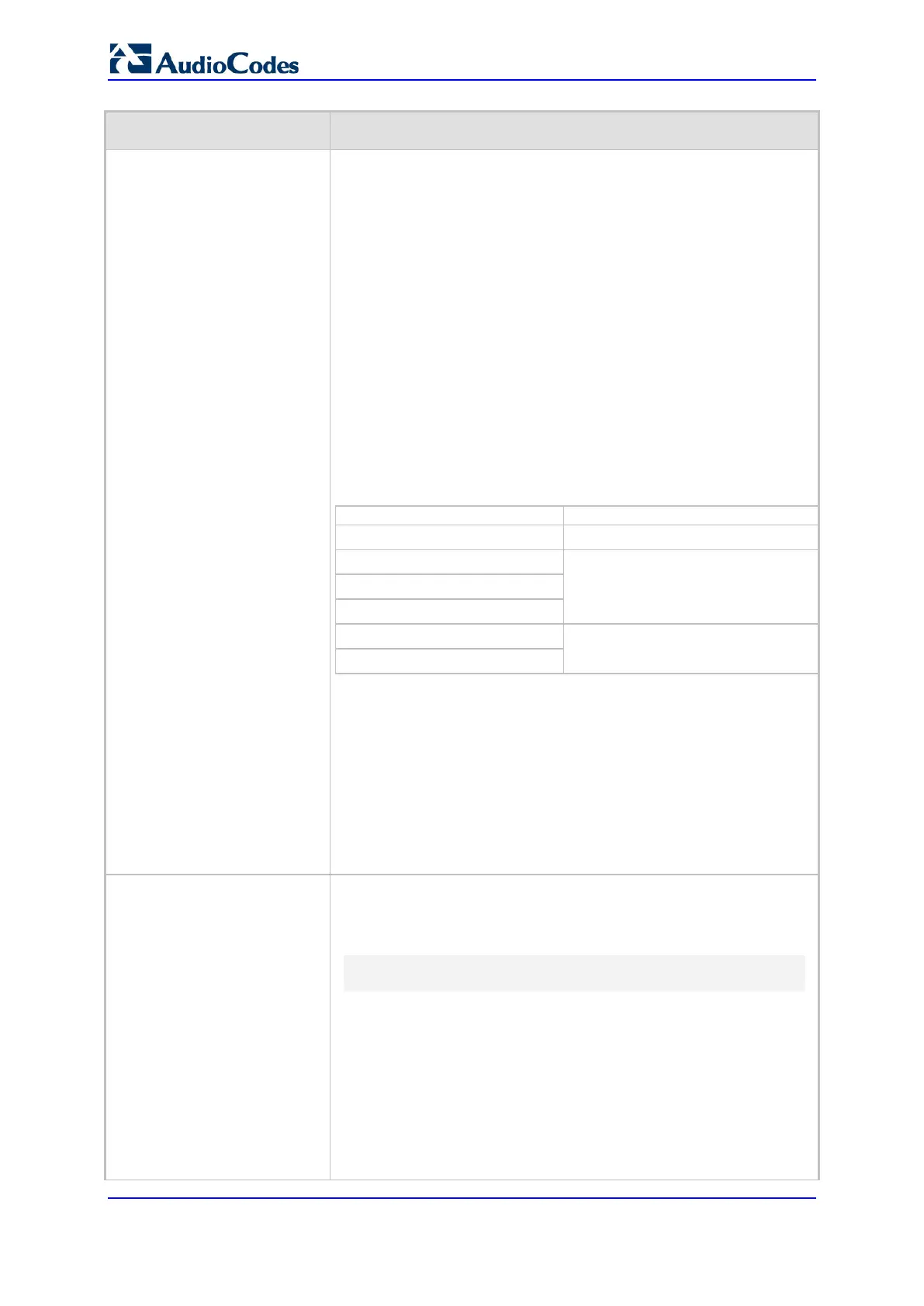User's Manual 852 Document #: LTRT-10466
Mediant 500L MSBR
Parameter Description
Web: Enable History-Info
Header
EMS: Enable History Info
CLI: hist-info-hdr
[EnableHistoryInfo]
Enables usage of the History-Info header.
[0] Disable (default)
[1] Enable
User Agent Client (UAC) Behavior:
Initial request: The History-Info header is equal to the Request-
URI. If a PSTN Redirect number is received, it is added as an
additional History-Info header with an appropriate reason.
Upon receiving the final failure response, the device copies the
History-Info as is, adds the reason of the failure response to the
last entry, and concatenates a new destination to it (if an
additional request is sent). The order of the reasons is as follows:
a. Q.850 Reason
b. SIP Reason
c. SIP Response code
Upon receiving the final response (success or failure), the device
searches for a Redirect reason in the History-Info (i.e., 3xx/4xx
SIP reason). If found, it is passed to ISDN according to the
following table:
302 - Moved Temporarily Call Forward Universal (CFU)
408 - Request Timeout Call Forward No Answer (CFNA)
480 - Temporarily Unavailable
487 - Request Terminated
486 - Busy Here Call Forward Busy (CFB)
600 - Busy Everywhere
If history reason is a Q.850 reason, it is translated to the SIP
reason (according to the SIP-ISDN tables) and then to ISDN
Redirect reason according to the table above.
User Agent Server (UAS) Behavior:
The History-Info header is sent only in the final response.
Upon receiving a request with History-Info, the UAS checks the
policy in the request. If a 'session', 'header', or 'history' policy tag
is found, the (final) response is sent without History-Info;
otherwise, it is copied from the request.
Web: Use Tgrp Information
EMS: Use SIP Tgrp
CLI: use-tgrp-inf
[UseSIPTgrp]
Determines whether the SIP 'tgrp' parameter is used. This SIP
parameter specifies the Trunk Group to which the call belongs
(according to RFC 4904). For example, the SIP message below
indicates that the call belongs to Trunk Group ID 1:
INVITE sip::+16305550100;tgrp=1;trunk-
context=example.com@10.1.0.3;user=phone SIP/2.0
[0] Disable = (Default) The 'tgrp' parameter isn't used.
[1] Send Only = The Trunk Group number or name (configured in
the Trunk Group Settings) is added to the 'tgrp' parameter value
in the Contact header of outgoing SIP messages. If a Trunk
Group number / name is not associated with the call, the 'tgrp'
parameter isn't included. If a 'tgrp' value is specified in incoming
messages, it is ignored.
[2] Send and Receive = The functionality of outgoing SIP
messages is identical to the functionality described for option [1].
In addition, for incoming SIP INVITEs, if the Request-URI

